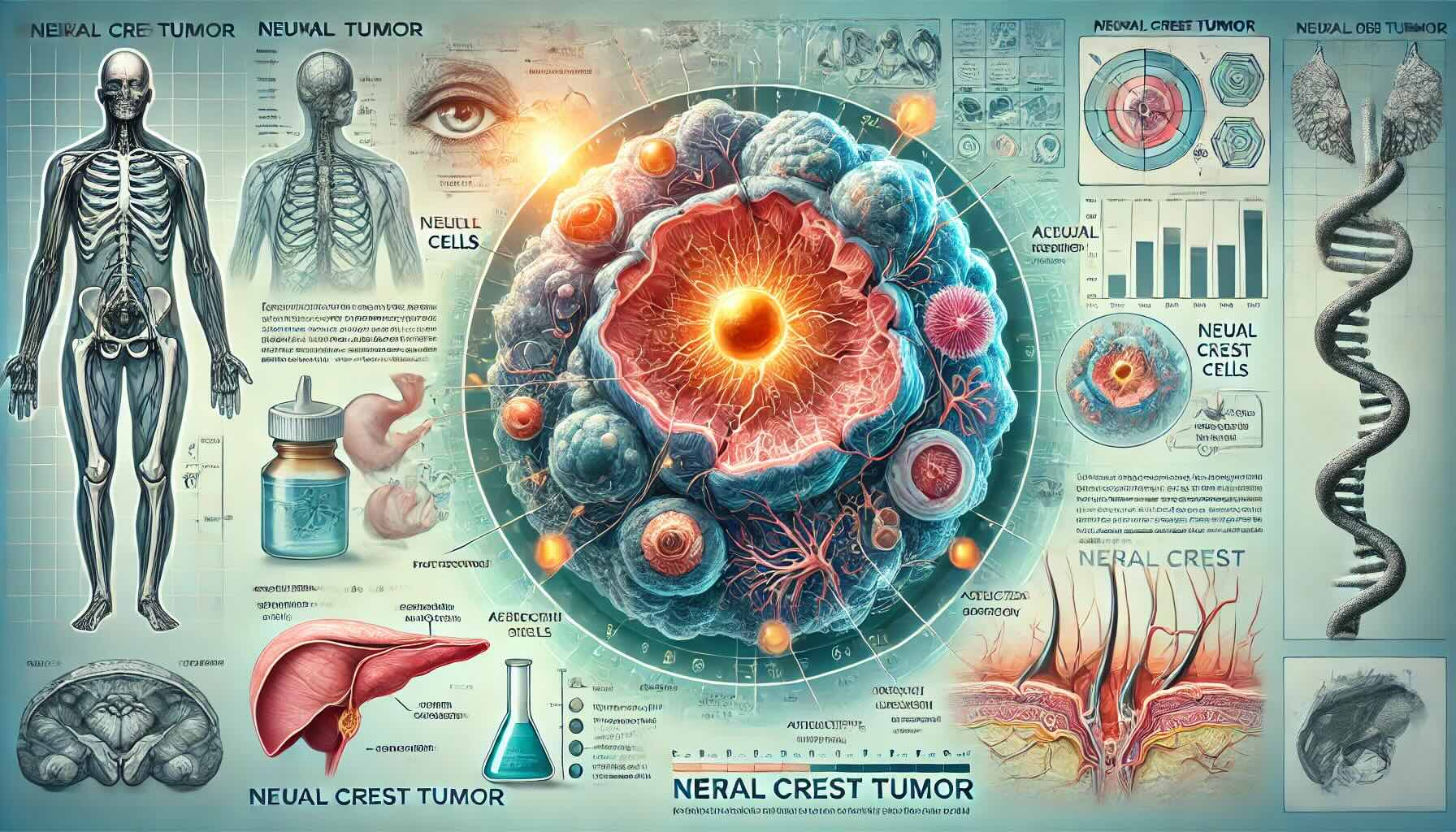
Neural crest tumors are a complex and intriguing topic in the medical field. These tumors originate from neural crest cells, which are a group of cells in the embryo that contribute to the development of various tissues and organs. Neuroblastoma, the most common type, primarily affects children and can be found in the adrenal glands, neck, chest, or spinal cord. Understanding these tumors is crucial for early diagnosis and treatment. This post will provide 25 essential facts about neural crest tumors, shedding light on their characteristics, symptoms, and treatment options. Whether you're a student, parent, or just curious, these facts will help you grasp the basics of this medical condition.
Key Takeaways:
- Neural crest tumors are cancers that develop from cells in the neural crest. They can occur in various parts of the body and have different types, symptoms, and treatment options.
- Early detection and understanding of neural crest tumors are crucial for effective treatment. Symptoms vary depending on the tumor's location, and accurate diagnosis is essential for determining the best treatment approach.
What is a Neural Crest Tumor?
Neural crest tumors are a group of cancers that arise from cells originating in the neural crest during embryonic development. These cells can develop into various tissues, including nerves, skin, and bones. Understanding these tumors is crucial for early diagnosis and treatment.
- Neural crest tumors can occur in both children and adults, though they are more common in children.
- Neuroblastoma is the most common type of neural crest tumor in children.
- These tumors can develop in various parts of the body, including the adrenal glands, neck, chest, and spine.
- Neural crest tumors can be benign (non-cancerous) or malignant (cancerous).
- The exact cause of neural crest tumors is still unknown, but genetic factors may play a role.
Types of Neural Crest Tumors
Different types of neural crest tumors exist, each with unique characteristics and treatment options. Knowing the types helps in understanding the complexity of these tumors.
- Neuroblastoma is a malignant tumor that often affects infants and young children.
- Ganglioneuroma is a benign tumor that usually occurs in older children and young adults.
- Ganglioneuroblastoma contains both benign and malignant cells, making it a mixed tumor.
- Schwannoma is a benign tumor that arises from Schwann cells, which insulate nerves.
- Paraganglioma is a rare tumor that can be either benign or malignant and often occurs in the head and neck region.
Symptoms of Neural Crest Tumors
Symptoms vary depending on the tumor's location and size. Early detection can significantly improve treatment outcomes.
- Common symptoms include pain, swelling, and a palpable mass.
- Neuroblastomas can cause abdominal pain, constipation, and difficulty breathing.
- Tumors in the chest may lead to coughing, wheezing, and chest pain.
- Spinal tumors can cause back pain, weakness, and difficulty walking.
- Some neural crest tumors can produce hormones, leading to symptoms like high blood pressure and rapid heartbeat.
Diagnosis of Neural Crest Tumors
Accurate diagnosis is essential for effective treatment. Various diagnostic tools are used to identify neural crest tumors.
- Imaging tests like MRI, CT scans, and X-rays help locate the tumor and determine its size.
- Biopsy involves taking a tissue sample from the tumor to examine it under a microscope.
- Blood and urine tests can detect specific markers associated with neural crest tumors.
- Genetic testing may identify mutations linked to these tumors.
- Bone marrow aspiration can check if the cancer has spread to the bone marrow.
Treatment Options for Neural Crest Tumors
Treatment depends on the type, location, and stage of the tumor. Multiple approaches may be used to manage the condition.
- Surgery is often the first line of treatment to remove the tumor.
- Chemotherapy uses drugs to kill cancer cells and is commonly used for malignant tumors.
- Radiation therapy targets and destroys cancer cells with high-energy rays.
- Immunotherapy boosts the body's immune system to fight cancer.
- Clinical trials may offer access to new and experimental treatments.
Understanding neural crest tumors is vital for early detection and effective treatment. Each fact provides a glimpse into the complexity and challenges of managing these tumors.
Final Thoughts on Neural Crest Tumors
Neural crest tumors, while rare, hold significant importance in medical research and treatment. Understanding these tumors can lead to better diagnostic methods and therapies. They originate from neural crest cells, which play a crucial role in the development of various tissues and organs. These tumors can be benign or malignant, affecting different parts of the body, including the adrenal glands and nervous system.
Early detection and treatment are vital for improving patient outcomes. Advances in genetic research and imaging techniques have enhanced our ability to diagnose and treat these tumors more effectively. Awareness and education about neural crest tumors can help in early recognition and intervention, potentially saving lives.
Staying informed about the latest research and treatment options is essential for healthcare professionals and patients alike. By continuing to study and understand neural crest tumors, we can hope for better outcomes and improved quality of life for those affected.
Frequently Asked Questions
Was this page helpful?
Our commitment to delivering trustworthy and engaging content is at the heart of what we do. Each fact on our site is contributed by real users like you, bringing a wealth of diverse insights and information. To ensure the highest standards of accuracy and reliability, our dedicated editors meticulously review each submission. This process guarantees that the facts we share are not only fascinating but also credible. Trust in our commitment to quality and authenticity as you explore and learn with us.
